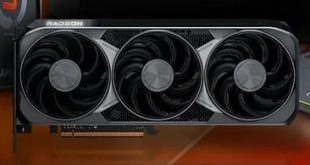Kinam Kim, the president of Samsung Electronics’ semiconductor business, presented his view on the development of chip manufacturing technologies at the International Solid-State Circuits Conference 2015 this week. Samsung is already developing its next-generation 10nm FinFET fabrication process, but in order to continue scaling down structures of chips, new materials and even new transistor structures will be needed for sub-10nm technologies, according to the executive.
“We believe the sky is the limit when it comes to developing refining technologies for semiconductors,” said Mr. Kim during his keynote, reports WhowiredKorea. “Samsung Electronics will continue to pursue its semiconductor innovations in order to create more amazing business opportunities in the industry.”
Despite concerns for the demise of scaling, higher performance in electronic systems for the coming decades is expected, thanks to innovations in materials, structures, and processes, claims the head of Samsung’s contract semiconductor manufacturing business. According to Mr. Kim, Samsung is already developing its 10nm fabrication process and it is logical to expect chips made using this technology to emerge on the market in late 2016, or sometime in 2017.
Beyond 10nm things will get trickier, but 7nm and 5nm manufacturing technologies are perfectly viable. Dr. Kinam Kim believes that at 7nm it makes sense to switch to a new transistor structure from FinFET/tri-gate. According to the executive, gate-all-around FETs will be viable at 7nm and beyond, reports TechOn. In GAA FETs gate material surrounds the channel region on all sides; GAA FETs can have two or four effective gates. It is interesting to note that Gate-all-around FETs have been implemented both using silicon nanowire as well as Indium gallium arsenide (InGaAs) nanowires. Therefore, it is possible that Samsung, just like Intel, is mulling to use InGaAs material at 7nm and beyond.
Taking into account that the amount of various mobile devices will get very high in the coming years, thinner manufacturing technologies will be required to build power efficient chips for them. Thus, it is about time for Intel, Samsung and other industry leaders to start thinking about 7nm, 5nm and more advanced technologies.
Discuss on our Facebook page, HERE.
KitGuru Says: Looks like the semiconductor industry will face a lot of major changes in the coming years. Drastic changes usually mean that weak players either disappear from the market, or merge with stronger players.
 KitGuru KitGuru.net – Tech News | Hardware News | Hardware Reviews | IOS | Mobile | Gaming | Graphics Cards
KitGuru KitGuru.net – Tech News | Hardware News | Hardware Reviews | IOS | Mobile | Gaming | Graphics Cards



Now if only battery technology could catch up !
All the good battery research was bought out by Tesla. They’re holding the market back by holding all the patents to push forward battery charge speed, life, and durability. There may be a few lingerers in the mobile area, but they haven’t made any announcements yet.